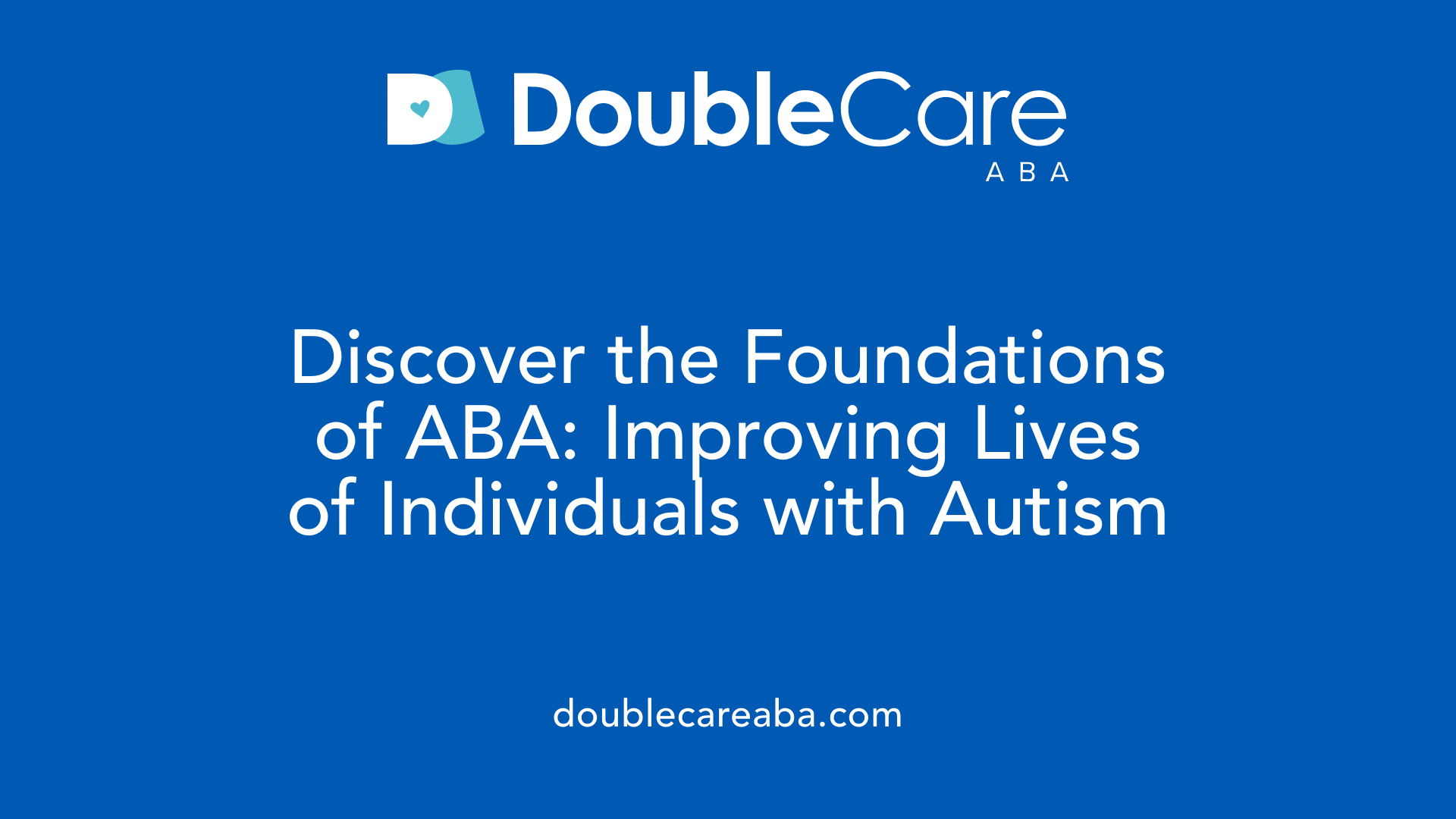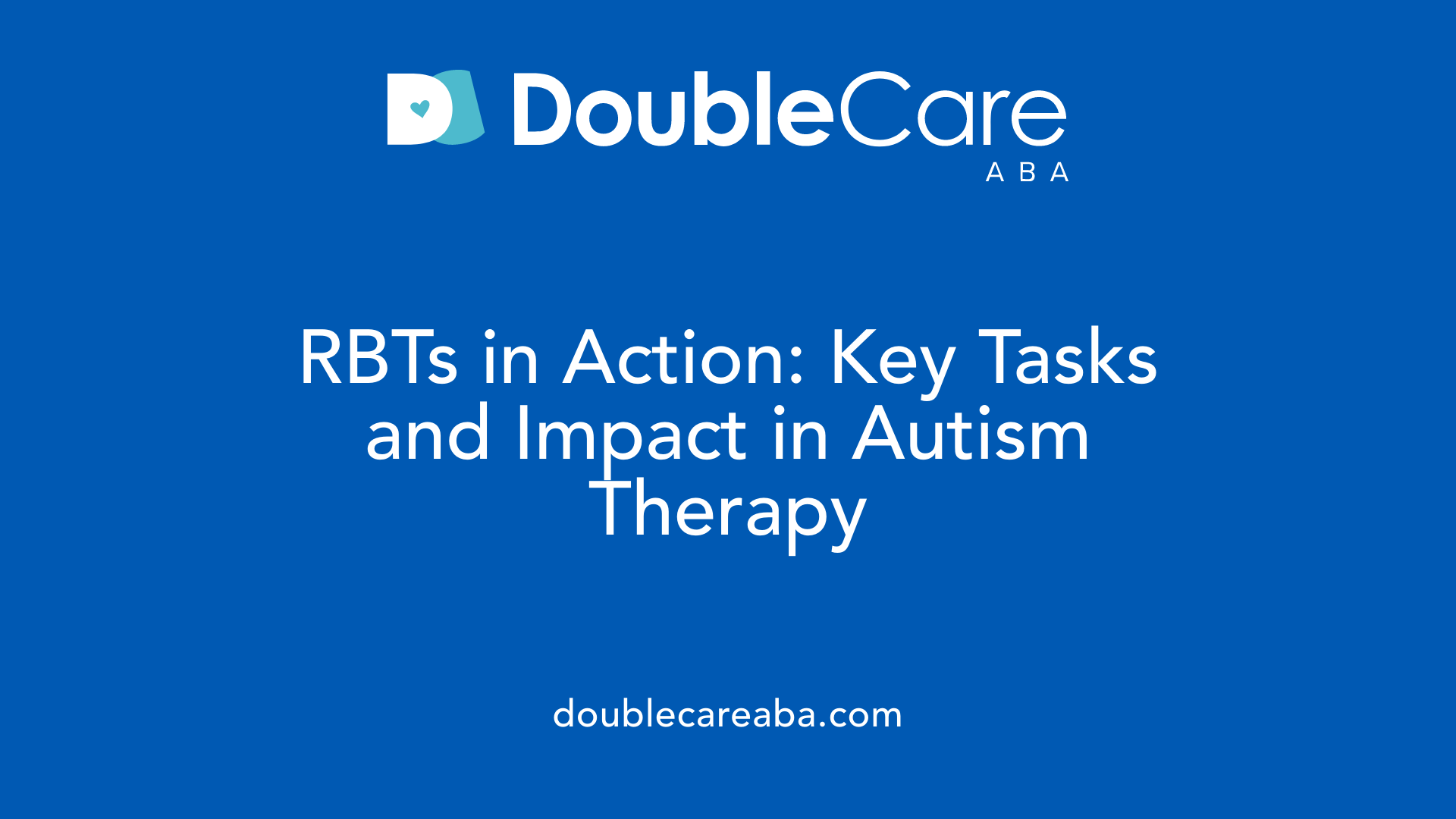RBT Resume
The Role of Registered Behavior Technicians in Autism Therapy

Understanding the Importance of RBTs in Behavioral Analysis Therapy
Registered Behavior Technicians (RBTs) play a crucial role in the delivery of Applied Behavior Analysis (ABA) therapy for individuals with autism. As front-line practitioners, RBTs implement intervention plans designed by Board Certified Behavior Analysts (BCBAs) and focus on improving communication, social skills, and reducing challenging behaviors. This article explores the functions, training, and impact of RBTs while also addressing the broader context of behavioral analysis therapy for autism.
What is Behavioral Analysis Therapy for Autism?

Definition and Purpose of Behavioral Analysis Therapy
Behavioral analysis therapy for autism, often called Applied Behavior Analysis (ABA), is a scientifically validated approach aimed at enhancing positive behaviors and minimizing challenging ones. By studying the interactions between a person's environment, actions, and results, ABA tailors interventions to support each individual's unique needs. The goal is to improve skills such as communication, social interaction, attention, and academic performance.
Key Components and Techniques Used in ABA
ABA therapy employs a variety of structured methods and strategies. Common techniques include prompting to encourage desired responses, reinforcing positive behaviors to increase their occurrence, and systematic teaching approaches like Discrete Trial Training (DTT), Pivotal Response Treatment (PRT), and the Early Start Denver Model (ESDM). Progress is closely monitored and interventions are adjusted based on continual assessment.
Settings Where ABA is Delivered
ABA can be practiced across multiple settings to fit the individual's daily life. These include home environments, schools, and community locations. Flexibility in setting helps generalize skills and supports real-world learning.
Support by Health Organizations
Leading health authorities recognize ABA as an effective, evidence-based treatment for autism. It is widely endorsed by organizations such as the American Psychological Association and the U.S. Centers for Disease Control and Prevention. Ongoing research aims to refine treatment duration and long-term outcomes, ensuring optimal benefits for individuals receiving ABA therapy.
How Behavioral Analysis Therapy Works for Individuals with Autism

The Assessment Process in ABA
Behavioral analysis therapy for autism begins with a comprehensive assessment. This stage helps identify specific behaviors that need to be addressed. Therapists use systematic observations and data collection to understand the individual's unique challenges and strengths.
ABC Model Explanation
A core tool in ABA is the ABC model, which stands for Antecedent, Behavior, and Consequence. Antecedents are events or triggers before a behavior occurs, the Behavior is the action itself, and Consequences are what happen after. This analysis helps therapists understand why a behavior happens and how to change it effectively.
Individualized Intervention Plans
Following assessment, therapists create tailored intervention plans. These plans focus on enhancing skills such as communication, social interaction, and daily living, while targeting behaviors that may interfere with learning or socialization.
Techniques Like DTT and PRT
Discrete Trial Training (DTT) and Pivotal Response Training (PRT) are common ABA techniques. DTT breaks skills into small, manageable steps with clear instructions and rewards, promoting learning through repetition. PRT focuses on pivotal areas like motivation and self-management, aiming for improvements that generalize across situations.
Role of Family Involvement
Family participation is vital in ABA therapy. It ensures that strategies and learned behaviors are reinforced consistently at home and in other settings, greatly increasing the effectiveness of treatment and helping individuals with autism make meaningful progress.
| Topic | Description | Role in Therapy |
|---|---|---|
| Assessment Process | Identifies behaviors and collects baseline data | Guides individualized intervention |
| ABC Model | Analyzes triggers, behaviors, and outcomes | Determines causes and guides behavioral change |
| Intervention Plans | Customized programs targeting specific skills and behaviors | Addresses unique needs and goals |
| DTT and PRT Techniques | Structured teaching methods focusing on skill acquisition and motivation | Enhances learning and generalization |
| Family Involvement | Engagement of caregivers in therapy implementation | Ensures consistency and reinforcement |
Who Provides Behavioral Analysis Therapy?

Roles of BCBAs, RBTs, and Therapists
Behavioral analysis therapy for autism, commonly referred to as Applied Behavior Analysis (ABA), is delivered by a team of trained professionals. Board Certified Behavior Analysts (BCBAs) are responsible for devising and supervising individualized treatment plans using evidence-based strategies. Registered Behavior Technicians (RBTs) and therapists directly implement these interventions under BCBA supervision to improve social skills, communication, and reduce challenging behaviors.
Settings for Therapy Delivery
ABA therapy is flexible and can be conducted in multiple environments. Common settings include the child's home, schools, community centers, and specialized clinics. This adaptability ensures therapy aligns with the child's daily routines and promotes generalization of skills across settings.
Insurance and Coverage Considerations
Accessing ABA therapy often involves healthcare providers like physicians and psychologists who establish medical necessity. Insurance options vary widely; coverage may be available through Medicaid, private insurers, or specialized autism service plans. Families are encouraged to verify coverage specifics to understand benefits and out-of-pocket costs.
Organizations Specializing in ABA Services
Several organizations focus exclusively on providing ABA therapy. Examples include dedicated centers such as the Center for ABA, which employ extensive clinical teams experienced in autism interventions. These providers emphasize tailored approaches to meet individual needs, offering consistent support throughout the therapy process.
The Role and Responsibilities of Registered Behavior Technicians

What is a Registered Behavior Technician (RBT)?
A Registered Behavior Technician (RBT) is a paraprofessional certification in the field of applied behavior analysis (ABA). RBTs are trained individuals who provide direct behavioral interventions under the supervision of a Board Certified Behavior Analyst (BCBA). To become an RBT, candidates must complete specialized training, pass a competency assessment, and adhere to a code of ethics.
What are the daily tasks and intervention implementations of RBTs?
RBTs carry out behavior intervention plans designed by BCBAs. Their daily tasks include collecting data on client behavior, implementing behavior modification procedures, and directly engaging with clients during therapy sessions. These interventions are individualized and target skills such as communication, social behavior, and adaptive living.
How does BCBA supervision influence RBT work?
RBTs operate under the close supervision of BCBAs to ensure effective treatment. The BCBA oversees the development of intervention plans, provides guidance, and reviews data collected by the RBTs. This supervision is crucial for maintaining treatment fidelity and ensuring ethical practices.
Why are RBTs important for treatment fidelity and data collection?
Treatment fidelity refers to the accurate and consistent implementation of behavior plans. RBTs are essential in maintaining this fidelity as they are responsible for executing interventions as intended. Moreover, they collect precise data that inform treatment adjustments. Accurate data collection by RBTs enables BCBAs to analyze progress and modify plans for improved outcomes.
Benefits of Behavioral Analysis Therapy for Individuals with Autism

What are the benefits of behavioral analysis therapy for individuals with autism?
Behavioral analysis therapy, especially Applied Behavior Analysis (ABA), is highly effective in helping individuals with autism improve various essential skills. One of the most notable benefits is the enhancement of communication and social abilities. ABA uses techniques like positive reinforcement and prompting to encourage meaningful interactions and reduce behaviors that may interfere with learning or socializing.
Improvements in communication and social skills
ABA therapy helps individuals with autism develop better language and social interaction. This can include learning to express needs and emotions more clearly, understanding social cues, and engaging more comfortably with peers and family members.
Development of adaptive and academic abilities
Beyond social skills, ABA supports the growth of adaptive behaviors such as self-care, following instructions, and academic skills. Customized treatment plans focus on each individual's unique needs to foster learning and skill acquisition in practical areas.
Support for independence and quality of life
ABA therapy promotes independence by teaching skills that help individuals manage daily activities on their own. This empowerment leads to greater participation in community activities and a higher overall quality of life.
Evidence supporting early intensive intervention
Research shows that early and intensive ABA therapy offers significant developmental gains. Starting treatment at a young age helps many children with autism reach milestones that improve their long-term outcomes, including social integration and academic success.
These benefits collectively make behavioral analysis therapy a valuable tool for supporting individuals with autism in living fuller, more independent lives.
Training and Certification Pathways for RBTs
What is the RBT Certification Process?
The Registered Behavior Technician (RBT) certification is designed for individuals who provide direct behavior-analytic services. To become certified, candidates must complete a structured training and evaluation process. This includes a 40-hour training course covering behavior analysis principles, followed by a competency assessment administered by a qualified supervisor.
What Coursework and Supervised Experience Are Needed?
Candidates must complete at least 40 hours of training focused on applied behavior analysis (ABA). Topics include behavior reduction, skill acquisition, data collection, and professional conduct. After training, applicants are required to pass a formal competency assessment, demonstrating their practical skills.
Why Is Ongoing Training and Ethics Important?
Maintaining RBT certification requires ongoing supervision and adherence to ethical standards set by the Behavior Analyst Certification Board (BACB). Regular supervision ensures the technician provides effective services, while ethical guidelines promote client welfare and professional integrity.
How Do RBTs Differ from BCBAs?
While RBTs are primarily frontline technicians implementing behavior plans, Board Certified Behavior Analysts (BCBAs) have advanced education and oversee the design and management of these plans. BCBAs hold graduate degrees and are responsible for supervision and clinical decision-making, making their roles complementary yet distinct.
The Therapeutic Environment: Where ABA Happens
What settings are commonly used for ABA therapy?
ABA therapy is delivered in diverse environments including home-based, school-based, and community settings. Home-based interventions allow personalized routines and natural contexts, while school-based sessions integrate learning with academic goals. Community settings provide real-world practice opportunities for social skills and functional communication.
Why is flexibility in therapy settings beneficial?
Flexible settings enable ABA therapy to be tailored around the child's daily life, promoting generalization of skills across different environments. This variety helps children adapt learned behaviors in multiple contexts, enhancing the therapy’s effectiveness.
How do therapists work with caregivers and educators?
Collaborative approaches are crucial, involving caregivers and educators directly. Therapists train parents and teachers to implement strategies consistently, ensuring that therapeutic gains continue outside of formal sessions. This teamwork fosters a supportive network around the child, improving outcomes through shared knowledge and consistency.
Ethical Considerations and Controversies in ABA Therapy
Historical Use of Aversive Techniques and Modern Changes
ABA therapy has a complex history, including the use of aversive techniques such as electric shocks and other unpleasant stimuli to reduce unwanted behaviors. While these methods are now almost entirely abandoned and heavily regulated, their legacy has left lasting ethical concerns and mistrust among some communities. Today, modern ABA focuses on positive reinforcement, aiming to encourage desirable behaviors without causing harm or distress.
Concerns Raised by Neurodiversity Advocates
Neurodiversity advocates often criticize ABA for its potential to suppress natural autistic behaviors, leading to masking and causing emotional distress or trauma. They argue that targeting autistic traits for reduction may contribute to a loss of identity and undervalue the acceptance of neurodiverse individuals as they are. These concerns highlight the need for therapy approaches that respect individuality and psychological well-being.
Balancing Behavior Reduction with Acceptance
One of the main ethical challenges in ABA is finding a balance between reducing behaviors that may be harmful or interfering with daily functioning and respecting autistic traits that contribute to a person's unique identity. Critics call for a shift from forcing conformity toward fostering acceptance, promoting skills that improve quality of life without erasing individuality.
Evolving Ethical Standards in Modern ABA Practices
In response to criticisms and changing perspectives, ethical standards in ABA have evolved significantly. Current practices prioritize individualized treatment plans, employ positive and non-aversive techniques, and emphasize informed consent and collaboration with clients and families. Despite ongoing debates, evidence supports ABA’s effectiveness, especially when administered with sensitivity to ethical concerns and client autonomy.
Career Outlook and Advancement Opportunities for RBTs
Growing demand for RBTs in autism therapy
The need for Registered Behavior Technicians (RBTs) has surged alongside increasing recognition of autism spectrum disorder (ASD) and the effectiveness of applied behavior analysis (ABA) therapy. This growth is driven by greater awareness among healthcare providers and families, fueling demand for skilled technicians who deliver behavior intervention services.
Potential career paths and further certification
RBTs can advance their careers by pursuing additional certifications, such as becoming a Board Certified Assistant Behavior Analyst (BCaBA) or Board Certified Behavior Analyst (BCBA). These credentials open pathways to supervisory roles and specialized practice areas. Many RBTs also transition into roles like clinical coordinators, program directors, or ABA educators, expanding their impact in the field.
Impact of professional development on therapy outcomes
Ongoing professional development for RBTs enhances their skills and adherence to best practices, directly influencing therapy effectiveness. Continuous training ensures RBTs remain updated on emerging interventions and ethical standards, contributing to improved patient outcomes and higher job satisfaction.
Conclusion: The Integral Role of RBTs in Autism Therapy
What Are the Contributions of RBTs to ABA Therapy?
Registered Behavior Technicians (RBTs) form the frontline of Applied Behavior Analysis (ABA) therapy, directly implementing treatment plans crafted by Board Certified Behavior Analysts (BCBAs). Their daily interactions with clients ensure that therapeutic goals are effectively pursued through consistent, individualized behavioral interventions. By collecting data, providing reinforcement, and adjusting activities according to client responses, RBTs drive the progress that leads to meaningful improvements in communication, social skills, and independence.
Why Is Quality Training and Supervision Essential for RBTs?
Because RBTs work closely with vulnerable populations, especially children with autism, rigorous training and ongoing supervision are vital. Proper certification ensures that RBTs possess a solid understanding of behavioral principles and ethics. Continued guidance from experienced BCBAs not only maintains treatment fidelity but also supports RBTs in professional growth and problem-solving, ultimately safeguarding the well-being and positive outcomes for clients.
What Does the Future Hold for ABA and RBT Roles?
The landscape of ABA therapy continues to evolve with advances in technology and research. Future directions include increased integration of telehealth services, which demand adaptability from RBTs to engage clients remotely while maintaining effectiveness. As the demand for autism services grows, expanding training programs and professional development opportunities will be necessary to prepare RBTs for more complex roles. Embracing innovations and expanding the scope of RBT responsibilities will ensure they remain indispensable in delivering high-quality autism therapy.
Summing Up the RBT Profession in Behavioral Analysis Therapy
Registered Behavior Technicians serve as vital members of the ABA therapy team, directly implementing treatment plans that enhance the lives of individuals with autism. Their hands-on work under the guidance of BCBAs ensures that interventions are delivered ethically, consistently, and effectively. While controversies around behavioral analysis therapy continue to prompt ongoing reflection and evolution, the role of RBTs remains central to advancing therapeutic outcomes. With proper training, certification, and support, RBTs contribute significantly to helping individuals with autism develop essential skills and achieve greater independence.
















